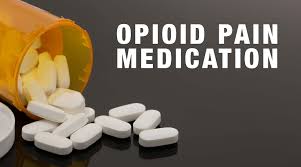
Opioid Medications. Prescription opioids are powerful pain-reducing medications that include oxycodone, hydrocodone, and morphine, among others, and have both benefits as well as potentially serious risks. However, too many Americans have been impacted by the serious harms associated with these medications, and despite ongoing efforts, the scope of the opioid crisis continues to grow.
One of the highest priorities of the FDA is advancing efforts to address the crisis of misuse and abuse of opioid drugs harming families. Opioids are claiming lives at a staggering rate, and overdoses from prescription opioids are reducing life expectancy in the United States.
At FDA, we’re working across the full scope of our regulatory obligations to impact this crisis. Our approach to reducing the misuse and abuse of opioids is outlined in FDA’s 2018 Strategic Policy Roadmap, which addresses various facets of this complex issue, as there are no simple answers to reverse this epidemic.
Decrease Exposure & Prevent New Addiction
Reducing the number of Americans who are addicted to opioids and cutting the rate of new addiction is one of the FDA’s highest priorities. This may be achieved by ensuring that only appropriately indicated patients are prescribed opioids and that the prescriptions are for durations and doses that properly match the clinical reason for which the drug is being prescribed in the first place.
- SUPPORT Act Section 3002: Report on Evidence-Based Opioid Analgesic Prescribing Guidelines (PDF – 225 KB)
- SUPPORT Act Section 7024: Report to Congress on Opioid Prescribing Limits (PDF – 871 KB)
- Opioid Policy Steering Committee (OPSC)
- Opioid Analgesic Risk Evaluation and Mitigation Strategy (REMS)
- FDA Opioid Systems Modeling Effort
- Disposal of Unused Medicines: What You Should Know
Support Treatment of Those with Opioid Use Disorder
Given the scale of the opioid crisis, with millions of Americans already affected, prevention is not enough. We must do everything possible to address the human toll caused by opioid use disorder and help those suffering from addiction by expanding access to lifesaving treatment.
- Medication-Assisted Treatment (MAT)
- Naloxone
- FDA Innovation Challenge: Devices to Prevent and Treat Opioid Use Disorder
Foster Development of Novel Pain Treatment Therapies
As we continue to confront opioid abuse and addiction, we must also take steps to help those with acute and chronic pain who need access to medicines, including opioids, get improved treatment alternatives. Transitioning from the current market, dominated by conventional opioids, to one in which most opioids have abuse-deterrent properties, holds significant promise for a meaningful public health benefit. While these innovative formulations are designed to make it harder for people to manipulate the opioid drug so they can’t be abused, it’s important that prescribers and patients understand that these drugs are not “abuse-proof,” and they do not prevent addiction, overdose, or death.
- SUPPORT Act Section 6012: Report on Abuse-Deterrent Opioid Formulations and Access Barriers Under Medicare (PDF – 698 KB)
- Abuse-Deterrent Formulations
- Patient-Focused Drug Development for Chronic Pain
Improve Enforcement & Assess Benefit/Risk
The FDA plays an enforcement role when it comes to the illicit market for diverted opioids and illegal drugs. One of those roles is collaborating with Customs and Border Protection on interdiction work on drugs being shipped through the mail. The agency has received new funding for processing drugs and other articles imported or offered for import through International Mail Facilities. A lot of the illicit drugs brought into the U.S., including products laced with lethal doses of fentanyl, are being purchased online and shipped in the mail. Although the sale of prescription opioids without a valid prescription is illegal, the FDA continues to see these products in the packages we inspect.
In addition, part of our ongoing work is ensuring that drug approval and removal decisions are made within a benefit/risk framework that evaluates not only the outcomes of opioids when used a prescribed, but also the public health effects of inappropriate use of these drugs. We are continually re-evaluating the safety of approved opioid products based on both post-market data the FDA has required from sponsors and additional sources of information as part of our safety surveillance. Opioid Medications
- Opioid Analgesic Drugs: Considerations for Benefit/Risk Assessment Framwork (draft guidance)
- Standards for Future Opioid Analgesic Approach and Incentives for New Therapeutics to Treat Pain and Addiction (public meeting)
- Pain Management and the Opioid Epidemic: Balancing Societal and Individual Benefits and Risks of Prescription Opioid UseExternal Link Disclaimer
- Oxymorphone (marketed as Opana ER) Information
Timeline
The FDA has compiled a timeline to provide chronological information about agency activities and significant events related to opioids. Included on this page is a summary timeline of key events, followed by tabbed years that provide selected additional actions and more detail about the items listed in the summary. Opioid Medications
Related Resources
- Safe Opioid Disposal – Remove the Risk Outreach Toolkit
- Safety Measures for Immediate Release (IR) Opioids
- Safety Measures for Extended-release and Long-acting (ER/LA) Opioids
- Safety Measures for Opioid Analgesics, Prescription Opioid Cough Products, and Benzodiazepines
- Search and Rescue: Connecting prescribers to resources to help prevent drug misuse and abuse in their practicesExternal Link Disclaimer